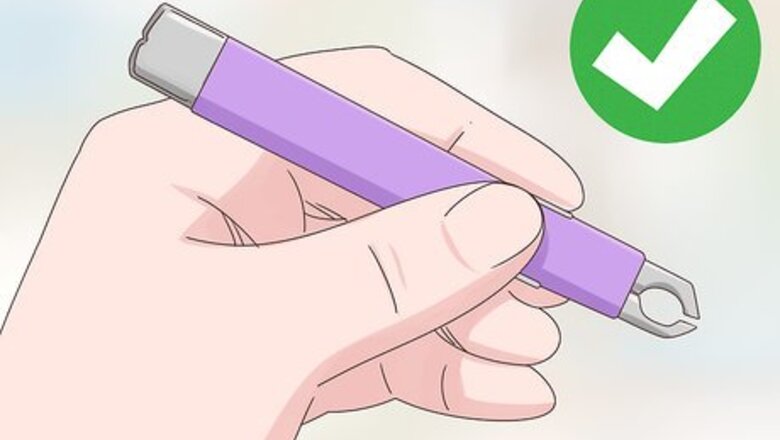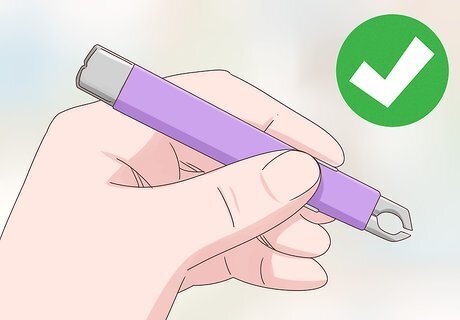
views
X
Research source
Picking Ticks off Your Rabbit

Choose a pair of fine-tipped tweezers. Fine-tipped tweezers are generally good for removing ticks, though you can also use a device made for removing ticks. You should use one or the other (not your fingers), so you can remove the tick at the head. Squeezing the body pushes more bacteria into the rabbit's body.

Grab the tick by the head. You don't want to grab the tick by the body, as that will squeeze it. It's possible the tick could even break in half, which might cause the tick's head to get stuck in the rabbit's skin. Use the tweezers to get at the head, which will be right next to the skin.

Pull the tick out. Slowly pull the tick straight out. You don't want to jerk, as you may leave the head in the rabbit's skin. Also, make sure you pull it straight out, not to one side or the other.

Kill the tick. Have a jar of rubbing alcohol ready for the tick. Drown the tick in the solution to kill it. Just putting it in water or flushing it down the toilet won't kill it, which is why you need to use alcohol.

Clean the area. Once you're done pulling the tick out, you should clean the area where the tick was. You can use a standard disinfectant. You can also add a bit of triple antibiotic ointment, like Neosporin, to the spot. The area will likely become red and inflamed. However, if the inflammation lasts for more than a week, you should talk to your vet.

Check for ticks every day. If your rabbit is outside, it has the possibility of picking up ticks each time it goes out. Make sure you are carefully inspecting your rabbit every day to see if it has new ticks that need to be removed. You'll most likely notice ticks around the rabbit's ears and face. They can get ticks on the rest of their body, but they will often pull them out on their own with their teeth. You may also notice ticks in the armpits and groin area. To check for ticks, hold the rabbit in your lap. You can check the backside, then turn the bunny over on its back to check the stomach area. Use a flea comb to gently get under the fur, looking for black spots. You can also run your fingers against the grain in the fur, feeling for bumps.
Dealing with an Infestation

Consult your vet for medication. Rabbits can take some medications, but you should really only treat rabbits with tick medications under the supervision of a vet. They cannot take all the same medications as dogs and cats. One medication that might be a possibility is ivermectin. This medication usually comes in oral or injectable forms. Never use a flea collar on your rabbit. Flea collars are toxic to rabbits.

Watch for symptoms of anemia. If a rabbit is infested with ticks, it can lose enough blood to get anemic. Some symptoms of anemia include low energy levels, weakness, and even dizziness (making the rabbit move oddly). If you suspect your rabbit has anemia, take it to the vet's office. Your rabbit may need a blood transfusion to recover.

Lower the number of ticks around the rabbit. If your rabbit lives outside, you can lower the number of ticks in the area simply by clearing out the area of brush. Cut down high grasses and rake away any leaves.



















Comments
0 comment